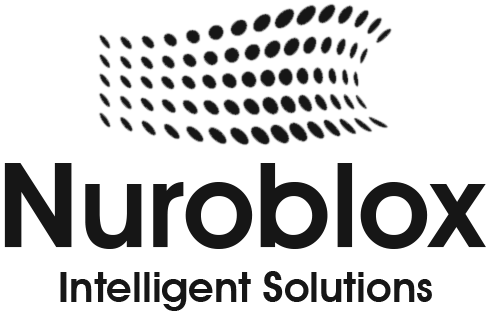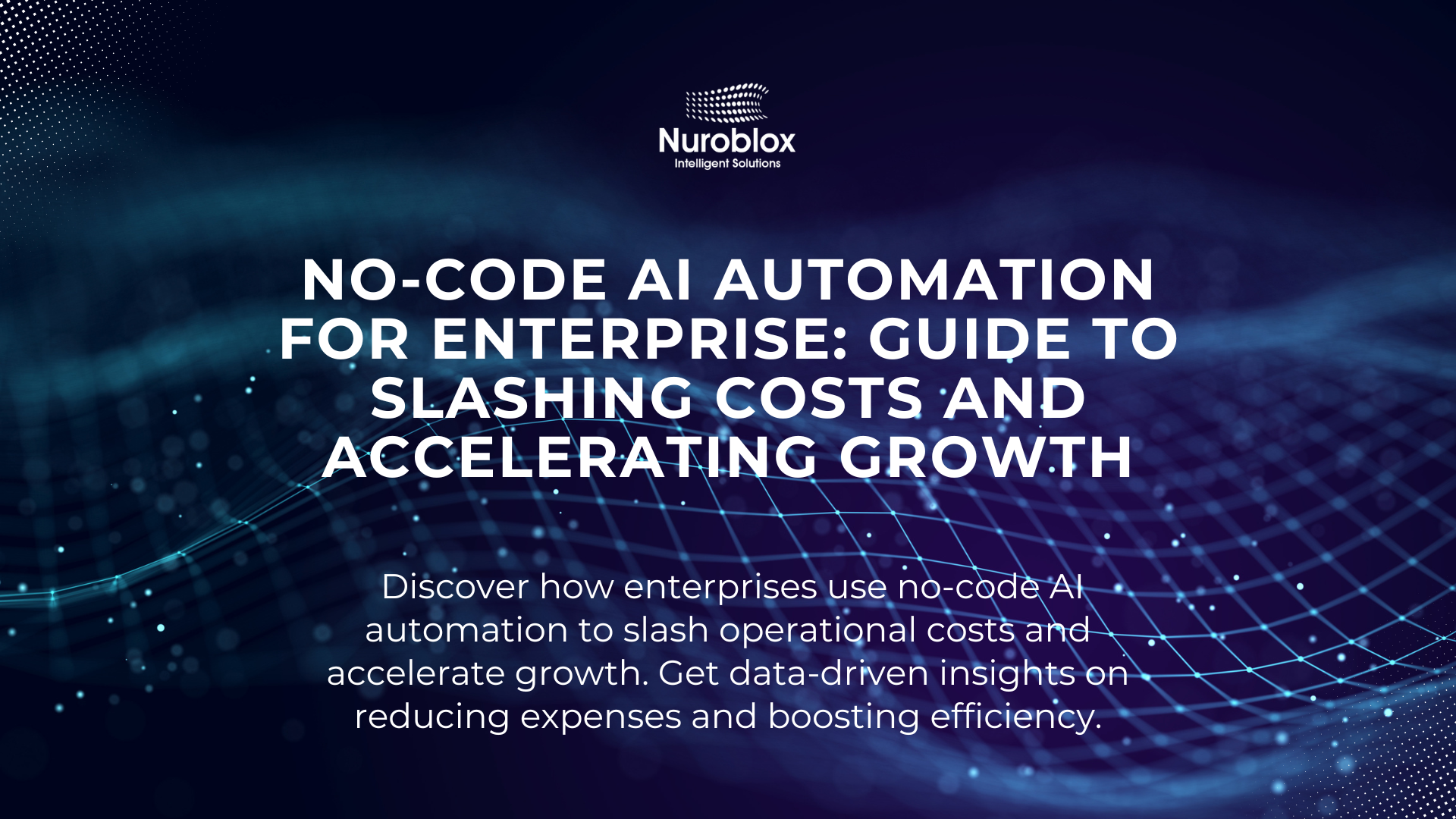No-Code AI Automation for Enterprise: Guide to Slashing Costs and Accelerating Growth
The global talent shortage is projected to result in $8.5 trillion in unrealized annual revenue by 2030, a stark figure that highlights a critical vulnerability for modern enterprises. Businesses are caught between the escalating complexity of digital operations and a chronic deficit of skilled developers needed to build solutions. This operational friction leads to ballooning costs, stalled projects, and a frustrating inability to adapt at the speed the market demands. Manual workflows, once the backbone of business, are now a significant competitive liability.
In this high-pressure environment, a transformative solution has emerged – no-code AI automation. This technology is not merely an incremental improvement; it represents a fundamental paradigm shift, democratizing development and empowering the business users who are closest to the operational pain points. By placing powerful AI and automation tools directly into the hands of non-technical teams, enterprises can dismantle IT backlogs, foster widespread innovation, and achieve unprecedented gains in efficiency.
This guide provides an authoritative analysis of how no-code AI automation enables enterprises to drastically reduce costs while simultaneously increasing operational speed. We will explore the data-driven benefits, from slashing development expenses to accelerating time-to-market, and offer a clear roadmap for implementing these tools to drive sustainable, scalable growth.
The Rise of No-Code AI – A Market in Hyper-Growth
The adoption of no-code AI is not a fleeting trend but a foundational market shift driven by urgent business needs. The global no-code AI platform market was valued at $3.83 billion in 2023 and is forecast to surge to $24.42 billion by 2030, expanding at a compound annual growth rate (CAGR) of 30.6%. Another projection estimates the market will reach $37.96 billion by 2033.
This explosive growth is fueled by several key factors –
- The Digital Imperative – Businesses must automate to survive. According to Gartner, 80% of organizations are expected to have hyperautomation initiatives in place by 2025.
- The Developer Gap – With a persistent shortage of software developers, no-code platforms provide a necessary alternative to traditional, code-heavy development.
- The Democratization of Technology – The most profound driver is the empowerment of non-technical employees. Gartner predicts that by 2026, a staggering 80% of technology products and services will be built by individuals working outside of IT departments. This rise of the “citizen developer” is fundamentally reshaping how organizations innovate and solve problems.
The Core Benefit – Drastically Reducing Operational Costs
While the promise of innovation is compelling, the most immediate and tangible benefit of no-code AI automation lies in its ability to deliver significant cost savings across the enterprise.
Slashing Development and Labor Expenses
Traditional software development is resource-intensive, requiring expensive, specialized talent and long project timelines. No-code platforms radically alter this cost equation by empowering existing business teams to build and deploy their own solutions. The data confirms this impact – on average, organizations save $187,000 annually by adopting no-code platforms, with 60% of companies reporting savings between $100,000 and $200,000 per year.
These savings also stem from the automation of manual, repetitive tasks. By delegating work like data entry, invoice processing, and report compilation to AI-powered bots, organizations can reduce manual processing time by 60% to 80%. For example, automating routine data entry can free up 10–20 hours per employee every week, allowing them to focus on high-value strategic initiatives instead of administrative drudgery.
Minimizing Errors and Compliance Risks
Human error is an inevitable and costly component of manual processing. AI automation minimizes this risk by executing tasks with precision and consistency. Studies show that automated workflows can lead to an 85% to 95% reduction in manual data errors, enhancing data integrity and preventing costly rework.
In regulated industries like finance and healthcare, the cost of non-compliance can be catastrophic. No-code AI automation helps lower compliance costs by enforcing standardized operating procedures and automatically generating detailed audit trails for every process. Furthermore, organizations that leverage security AI and automation can save an average of $1.9 million in the event of a data breach compared to those without.
Achieving Rapid ROI
Unlike traditional IT projects that can take years to deliver a return on investment, no-code AI initiatives provide value in a fraction of the time. The speed of deployment means that payback is often swift, with most organizations reporting a positive ROI within just 6 to 12 months of implementation. In some cases, such as with marketing automation, nearly half of all companies (44%) see returns in under six months.
This accelerated value creation is amplified by the adaptive nature of modern AI. Enterprises that leverage intelligent, AI-driven workflows report a year-on-year ROI of over 32%, driven by a combination of operational cost savings, error reduction, and process acceleration.
The Second Pillar – Increasing Speed and Agility Across the Enterprise
In today’s economy, speed is a competitive advantage. No-code AI automation equips enterprises with the agility needed to respond to market changes, innovate faster, and outpace competitors.
Accelerating Development and Deployment Cycles
The most dramatic impact of no-code is the radical compression of development timelines. No-code platforms can reduce application development time by as much as 90% compared to traditional methods. Projects that would typically take 6 to 8 months to code, test, and deploy can now be completed and launched in just 3 to 4 weeks. This allows businesses to move from idea to execution with unprecedented velocity.
Enabling Real-Time Decision-Making
Legacy decision-making processes, often encumbered by data silos and manual analysis, are too slow for the digital age. AI agents built on no-code platforms can analyze vast datasets in real-time, delivering instant insights that empower teams to act decisively. In finance, this could mean instantly approving a loan application or flagging a fraudulent transaction for review. This ability to make informed decisions at speed reduces operational delays and unlocks new opportunities.
Fostering a Culture of Innovation
By removing the dependency on backlogged IT departments, no-code platforms democratize innovation. When marketing, HR, and finance teams can build and refine their own automated workflows, they are empowered to solve their own problems. This fosters a culture of continuous improvement, where rapid prototyping and iteration become the norm. The entire organization becomes more resilient and adaptive, capable of quickly pivoting in response to new challenges and opportunities.

Adopting no-code AI automation is a strategic journey that requires careful planning and execution.
Identifying the Right Use Cases
The best starting point for automation is with high-volume, repetitive, and rule-based tasks that are prone to human error and consume significant employee time. Common examples include –
- Finance – Invoice processing, expense report approval, and financial close cycles.
- HR – Employee onboarding, payroll automation, and benefits administration.
- Customer Service – Handling routine queries with AI-powered chatbots and virtual assistants, freeing up human agents for complex issues.
- Operations – Automating inventory management, supply chain logistics, and quality control reporting.
Choosing the Right No-Code AI Platform
Not all platforms are created equal. When evaluating solutions, enterprises must look beyond marketing claims and assess platforms based on criteria essential for enterprise-grade deployment –
- Scalability – Can the platform handle complex, high-volume workflows without performance degradation?
- Security and Compliance – Does the platform offer robust security features like role-based access control (RBAC), end-to-end encryption, and compliance with industry standards (e.g., HIPAA, GDPR)?
- Integration Capabilities – Does it provide a rich library of pre-built connectors and APIs to seamlessly integrate with existing enterprise systems like ERPs and CRMs?
- Ease of Use – Is the visual interface truly intuitive for non-technical users, or does it require a steep learning curve?
Overcoming a Key Barrier – Data Security
For many executives, data security remains a primary concern. A 2025 PwC report found that 78% of business leaders cite data security and privacy as the number one barrier to wider AI adoption. Leading-edge platforms like Nuroblox address this head-on with advanced security architectures. Features such as Zero-Knowledge Processing, where the AI operates on data without needing direct access to the raw, sensitive information, provide powerful privacy safeguards that are critical for building trust and ensuring compliance in regulated sectors.
The Future is Agentic – Beyond Simple Automation
The current wave of no-code automation is just the beginning. The future lies in agentic AI autonomous systems that don’t just follow pre-defined rules but actively pursue goals, adapt to changing conditions in real-time, and learn from their experiences to continuously self-optimize.
Gartner predicts the rise of the “composable enterprise,” where intelligent AI agents will dynamically select, orchestrate, and rewire business processes in response to shifting market dynamics. In this paradigm, automation is no longer static but fluid and adaptive. Platforms like Nuroblox are purpose-built for this future, with architectures that support multi-agent collaboration and orchestration, enabling a level of intelligent automation far beyond the capabilities of basic RPA tools.
Conclusion
No-code AI automation is no longer a niche tool for early adopters but a strategic imperative for any enterprise aiming to thrive in the digital economy. It directly confronts the dual pressures of rising operational costs and the relentless demand for greater speed and agility. By democratizing development, this technology unlocks latent potential within an organization, turning business experts into agents of change.
The move towards intelligent, adaptive, and agentic systems marks the next frontier of enterprise transformation. As manual processes increasingly become a competitive drag, the question for leaders is no longer if their organization will adopt no-code AI, but how quickly they can scale it to fundamentally redefine their operational DNA.


